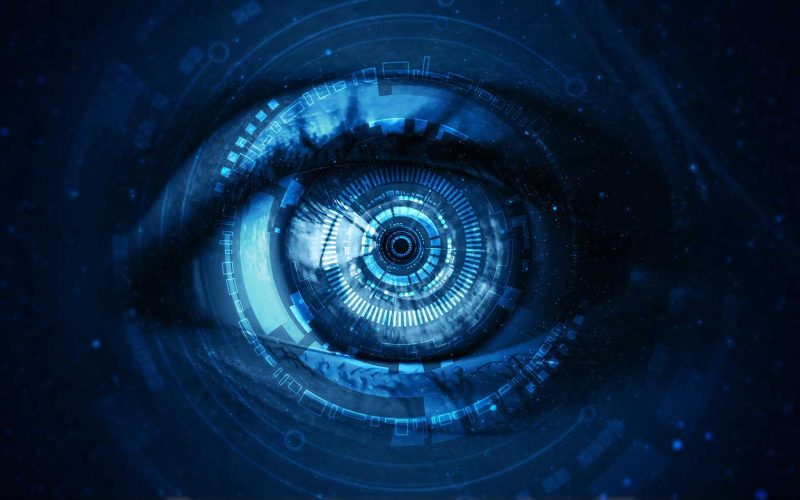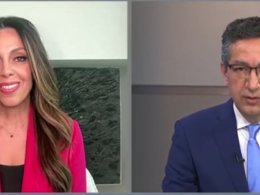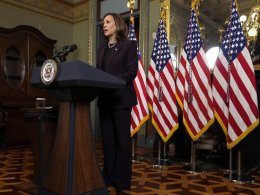A new report from the Foundation for Freedom Online outlines the extent to which officials at the Department of Homeland Security worked with outside groups to censor content they deemed "misinformation." Here are the five things to know about the newly revealed information.
1. Democratic and Progressive Influence
The report by the Foundation for Freedom Online indicates that individuals at DHS and its censorship bureau come from a long line of Democratic opposition groups and progressive advocacy groups. Many of the directors of the organizations teamed up with government officials and were open about censoring stories like the Hunter Biden laptop story and wanting to shut down conservative media outlets from reporting or posting anything on social media that was against Democratic politicians. Organizations like the Stanford Internet Observatory received a $3 million government grant from the Biden administration in 2021 after censoring the administration's political opposition in 2020. Officials in the DHS outsourced their censorship apparatus to progressive groups in June 2020 to pre-ban speech that could energize or mobilize opposition to a future "red mirage, blue shift" scenario five months away on Election Day.
2. CISA
In November 2019, Congress created the Cybersecurity Infrastructure Security Agency (CISA) to nominally defend America against cybersecurity threats from hostile foreign actors, not cyber censorship. However, following the unsubstantiated claims that Russia had just stolen, hacked, or otherwise interfered with the 2016 election, the agency's Internet censorship power grew out of interpreting "critical infrastructure" beyond its physical meaning to apply to metaphysical concepts. After the end of special prosecutor Robert Mueller's investigation into Russian interference in Summer 2019, DHS focused away from "foreign disinformation" and towards "domestic disinformation." The agency's actions were not conveyed to the American people, allowing for the justification that allowed for DHS and CISA to claim that any American citizen posting "misinformation" was suddenly conducting a cyber-attack against U.S. critical infrastructure.
3. Chris Krebs
According to the report, then-director of CISA in 2020, Chris Krebs' public statements on censorship issues provide insight into the founding intent of the government censorship operation. In April 2022, Krebs said that Hunter Biden’s laptop looked like Russian disinformation and that he did not care whether it was or was not Russian disinformation. He stressed that the news media did not cover the laptop during the 2020 election cycle. Krebs has also expressed his hatred for Republicans and conservative media outlets, saying that he hoped they were bankrupted and forced to pay billions in damages in the ongoing lawsuit by Dominion Voting Systems. On the issue of COVID-19, Krebs was enthusiastic about the need to censor critics of the government who questioned the pandemic protocols just like critics of government election and administration issues. After leaving CISA, both of Krebs's two new jobs in January 2021 were outgrowths of the CISA censorship network he established with outside partners while in government.
4. Election Integrity Partnership
According to the report, DHS used a private "counter-disinformation" collective called the Election Integrity Partnership (EIP), made up of four powerful and politically well-connected social media monitoring and mass-reporting groups in the world. The directors were all early industry pioneers in the rise of the censorship industry after the 2016 election, coming from Stanford Internet Observatory, Washington University's (UW) Center for an Informed Public, the Atlantic Council's Digital Forensics Research Lab, and Graphika. One of the common threads connecting these entities is their directors participated in aggressively pushing claims from January 2017 through early 2020 that Russian interference had helped Donald Trump win the 2016 election by using inauthentic bots and troll accounts on social media. Through this private collective, DHS could build the infrastructure for its current role as government coordinator of takedowns and throttling of U.S. citizen speech online.
5. Stanford Internet Observatory
The Stanford Internet Observatory (SIO) is an academic center set up in June 2019 to promote Internet censorship policies and real-time social media narrative monitoring of targeted political and social causes. During the 2020 election, the organization had 50 "misinformation" analysts at the university assigned to monitor conservative social media posts after SIO began its partnership with CISA. The Director of SIO, Alex Stamos, stated that his goal is to end the era of the traditional free and open Internet and move toward a controlled "cable news network" model where socially impactful views must be authorized by a gatekeeper. Stamos has a close personal and business relationship with Chris Krebs and the broader DHS-CISA network, traveling in 2019 from DC to California to discuss "misinformation" and "election security" for the 2020 election. Following the run-up to the 2020 election, Stamos was a frequent panel speaker on CISA "disinformation" panels.










